Listed on eBay
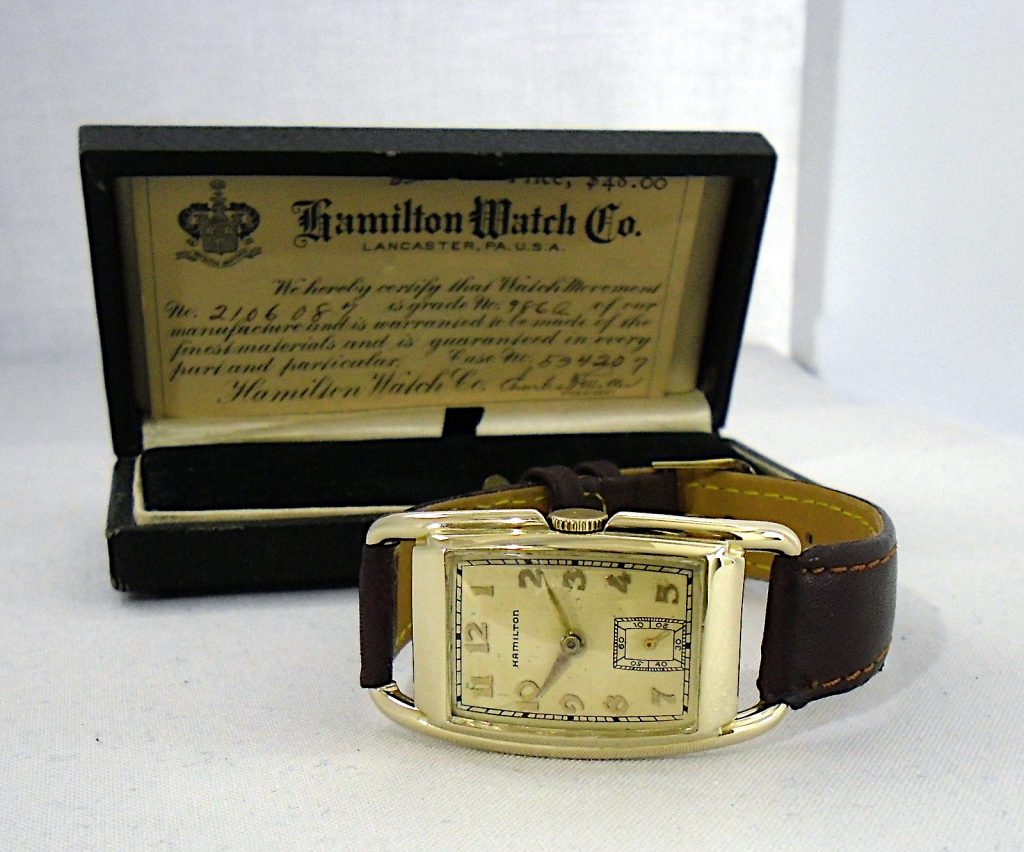
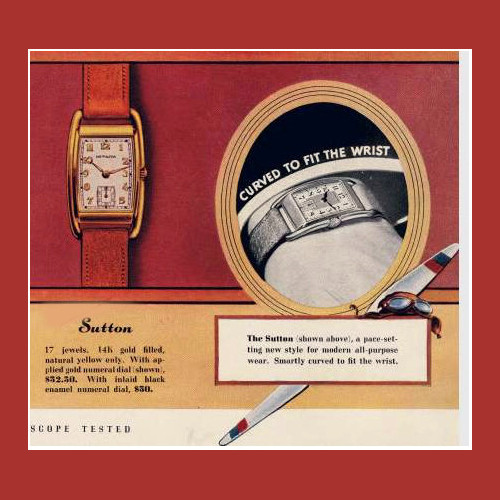
I see few discussions about the Hamilton Sutton wristwatch anywhere including in company literature, on watch forums or on blogs. I cannot account for that. The watch created a new trend in wristwatch styles.
The designers engineered an ultra-modern case and utilized an unique movement that led the global industry for decades. While watch enthusiasts claim the Gruen Curvex started the curved watch fad, the Sutton owns a claim to that fad also.
The company first produced the Sutton with a 14/0 size, model 980 17 jewel movement in a case that hugged one’s wrist. While the Gruen Curvex movement has an earlier patent date than Hamilton 14/0, some debate exists as to who made the first curved watch.
Hamilton bought Illinois Watch Company in 1927 and with it, ownership of the 207 caliber movement. The 207 formed the basis of the Hamilton 401 12/0 movement that the company re-engineered into the 14/0 980 series. Wadsworth Case Company designed the Sutton before the released of Gruen Curvex.
Gruen enthusiasts will form a crowd and march on the capital of any American city, state or federal courthouse in protest of anyone else’s claim to making the first curved wristwatch. I make no such claim. I just assert that no one really knows who came up with what and when. Besides, Gruen’s movements came from Switzerland.
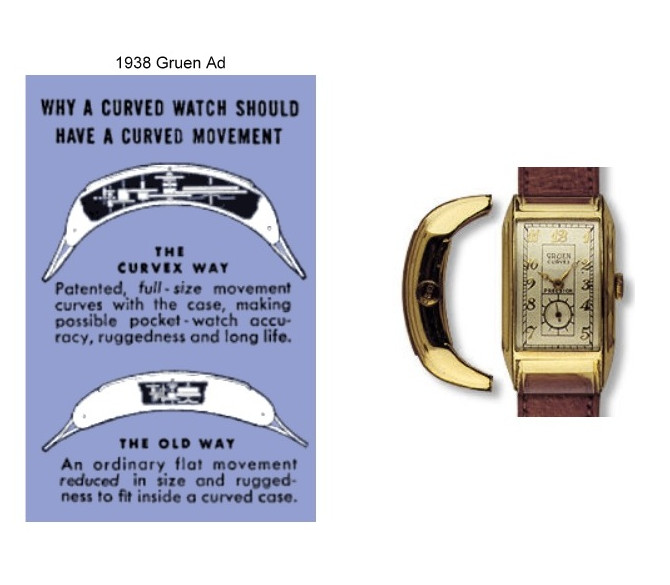
Note this information taken from “Time for America” by the late Don Sauers.
“Watches that were ‘curved to fit the wrist’ are a case in point. In 1988 Gruen attempted to prevent Rado from using this phrase in their advertising, claiming that they had used it to describe the Curvex in 1936.”
“Investigation revealed that the Hamilton Nelson had been advertised as ‘curved to fit the wrist’ in 1935, and that the Hamilton Ardmore had been promoted the same way in 1936. Interestingly, while Schwab & Wuischpard once claimed credit for the curved case concept, the Nelson case was
made by Wadsworth.”
Like many other writers who have taken on the subject of Hamilton watch designs, Mr. Sauers failed to mention the Sutton.
What did the Hamilton Sutton contribute to the Industry ?
The Sutton did little to influence the global watch industry and the wrap around concept when compared to the Gruen Curvex. Hamilton did not mass produce wristwatches, the company just made great ones. Perhaps that’s why the 982 movement stayed in production for so many decades. You can’t say that about Gruen movements.
The Sutton did set several precedents in style and function that go beyond the concept of “curved to the wrist”. The Sutton has a durable 14K gold filled case made by Wadsworth. Watches made during this period did not emphasize or use heavily reinforced designs. That makes the Sutton unique.
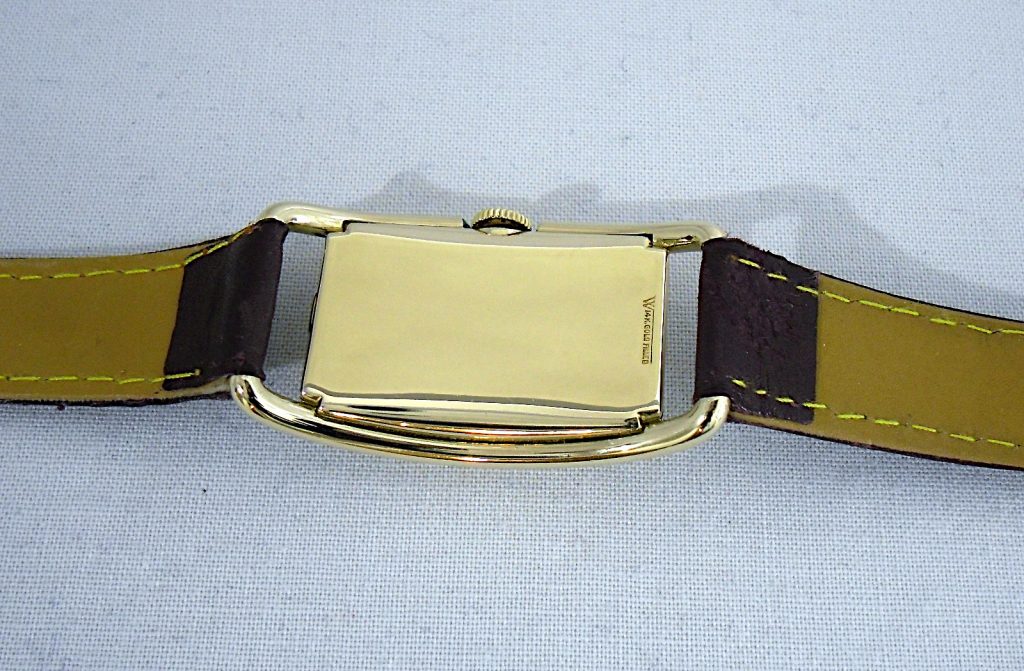
Hamilton Sutton 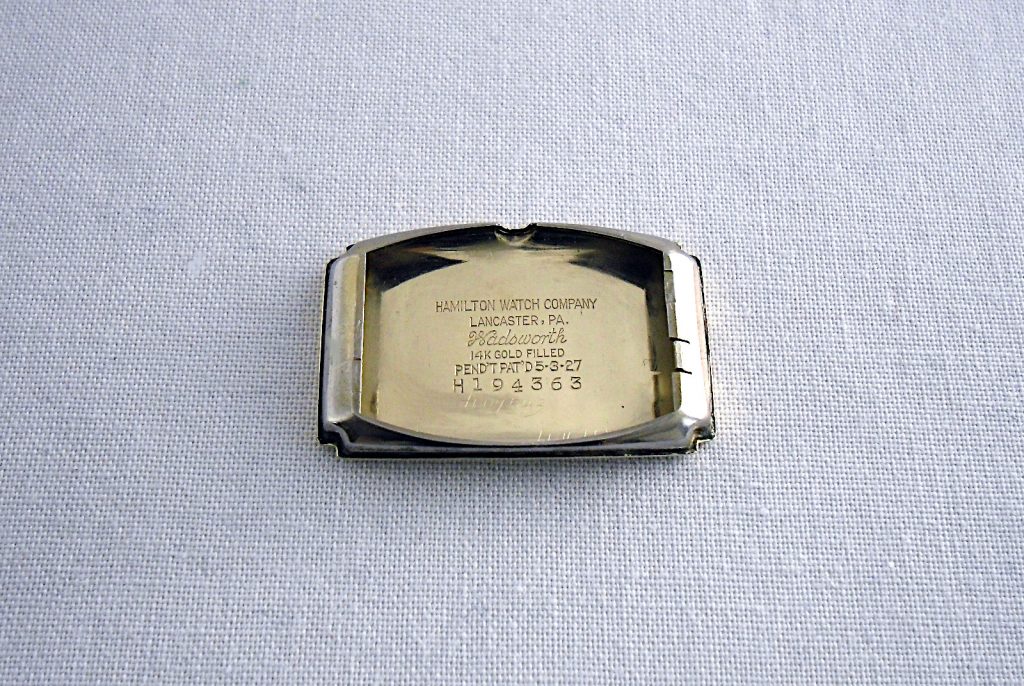
Wadsworth Case
The wrap around lugs provide added protection for the movement and the snap back. One can regard the recessed area at the 3 o’clock position as a crown guard.
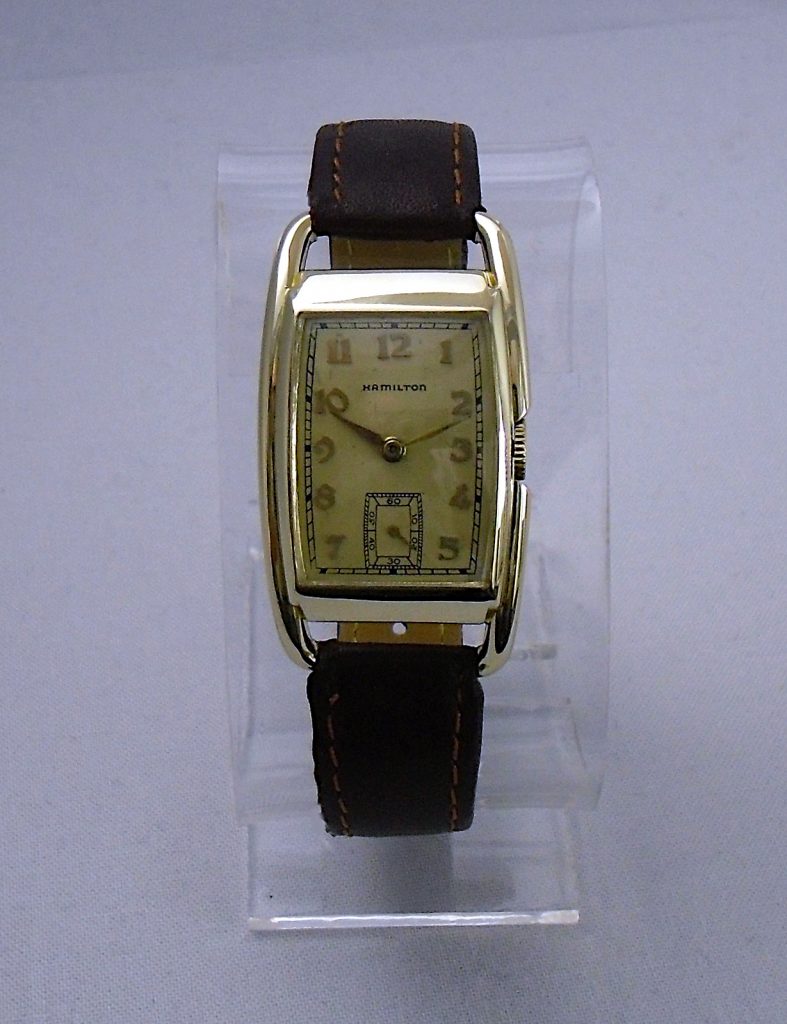
I consider the Sutton one of the more collectible Hamilton wristwatches with a caveat. You have to find one with a good case. Why? Remember, the term gold filled. Unlike solid gold watches, you can’t do much to repair the gold worn-off of brass of a wristwatch case.
Gold filled means that the manufacturer created a sandwich with gold on the top and bottom and brass in the middle. They heated and rolled those ingredients together into sheets. They then used the sheets to create cases. Life expectancy of that kind of case equated to a few years – not decades.
If you see a Sutton for sale, consider some of my pet peeves. Think about most vintage watches for sale on eBay and Etsy as worn out. I call them worn out watches with refinished hands and dials.
I look for watches from estates. I want ones that the owner rarely wore. The cases may look tarnished and dull, but I look at the wear – especially around the edges? I also look at the crystal and for rust – any rust – on the movement. I focus on the screws. If they look like new, then I consider that a collectible watch.
It may not run, but I can usually get one ticking by simply disassembling and cleaning it. That usually means oiling and adjusting will provide me with a movement close to the way it came when made. That’s the beauty of Hamilton movements. The company made their movements with the best materials available, used nickle plating and stocked a plethora of parts and materials.
In summary, I consider the Sutton an important part of any collection. I don’t know why people fail to notice them. I have two right now and one of them will wrap around my wrist on a regular basis.
